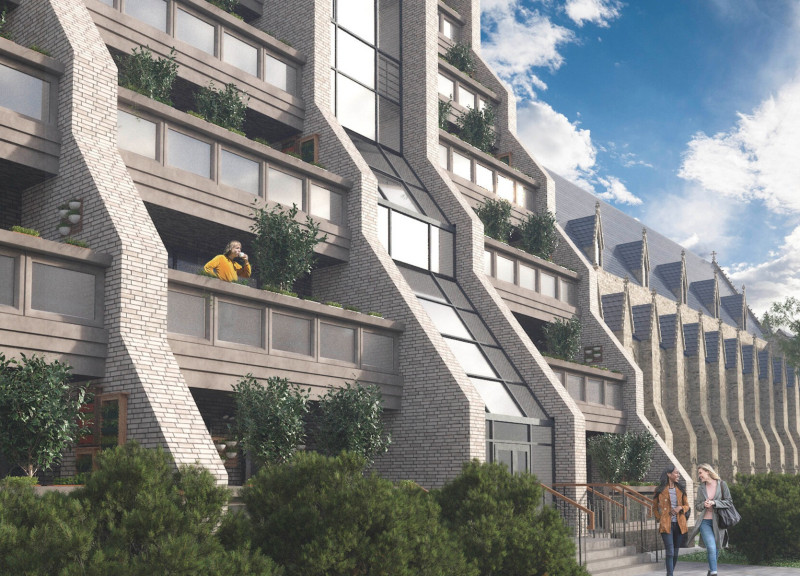5 key facts about this project
Designed with modularity at its core, "Terrace: Copy-Paste" reimagines the classic London terrace, allowing for flexibility in living arrangements. This adaptive approach enables the architecture to cater not only to families but also to individuals and small businesses, creating a dynamic community. The layout consists of residential units complemented by shared amenities, which fosters interaction among residents and enhances the sense of belonging within the community.
The project's design details are noteworthy, particularly the careful selection of materials that echo both traditional and modern sensibilities. Using thin bricks for the façades pays homage to the historical context, while fiber cement panels and metal elements introduce a contemporary contrast. Additionally, ceramic and cement blocks form the structural core of the building, ensuring durability and resilience against the city’s ever-changing landscape. Each material serves a specific purpose, contributing to the overall sustainability goals of the project. Key features include mineral wool insulation for energy efficiency, which speaks to the project’s commitment to environmental responsibility.
The spatial arrangement of the building maximizes light and air flow, a critical consideration in urban design. Double orientation for residential units allows for natural light to flood interiors, enhancing the quality of life for residents. Private terraces add an essential outdoor dimension to each unit, providing personal space that connects inhabitants with the urban green landscape. Common areas are strategically placed to promote social interaction, further bridging the gap between private and communal living.
Unique design approaches shine throughout this project, particularly in its modular system that enables adaptability to individual needs while maintaining a cohesive aesthetic. This flexibility is not solely about spatial arrangements; it extends to integrating small business spaces within the residential framework. This innovative idea encourages entrepreneurial endeavors among residents, allowing for a mixed-use environment that supports both living and working within the same space.
Furthermore, the project's emphasis on sustainability is apparent, with green roofs and urban gardening initiatives designed to improve both the ecological footprint of the building and the quality of life for its residents. The incorporation of outdoor spaces as integral elements of the design encourages community gardening and fosters a connection with nature, which is particularly valuable in dense urban settings.
Overall, "Terrace: Copy-Paste" serves as a thoughtful response to contemporary housing challenges, symbolizing a bridge between London’s architectural heritage and future urban development. This project embodies a vision of community-oriented living that respects historical context while adapting to modern needs.
To gain deeper insights into the architectural plans, sections, and overall designs that inform the project, exploring the detailed presentation would be beneficial. Understanding the architectural ideas underpinning "Terrace: Copy-Paste" offers a richer appreciation for its contribution to the dialogue surrounding urban housing solutions.


























